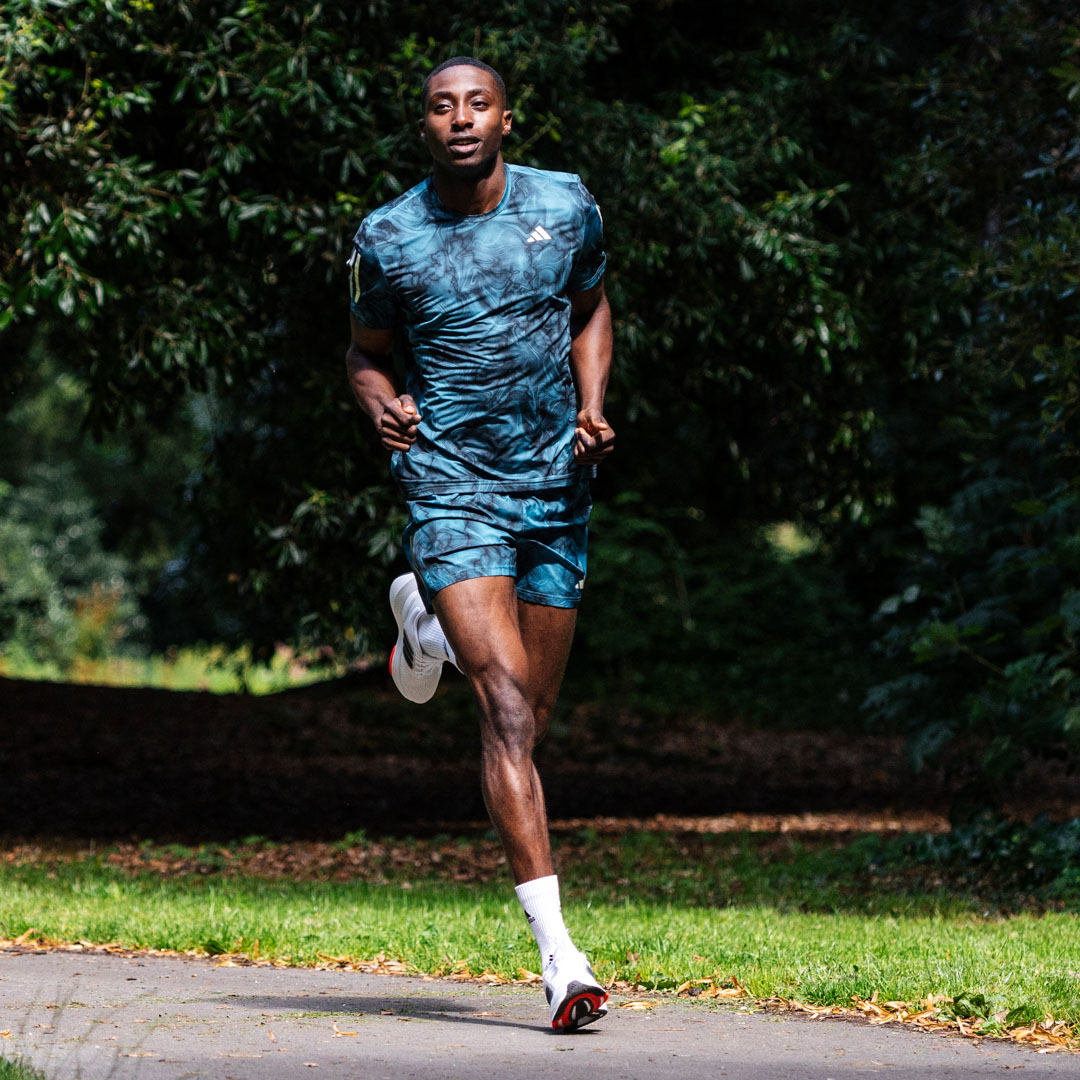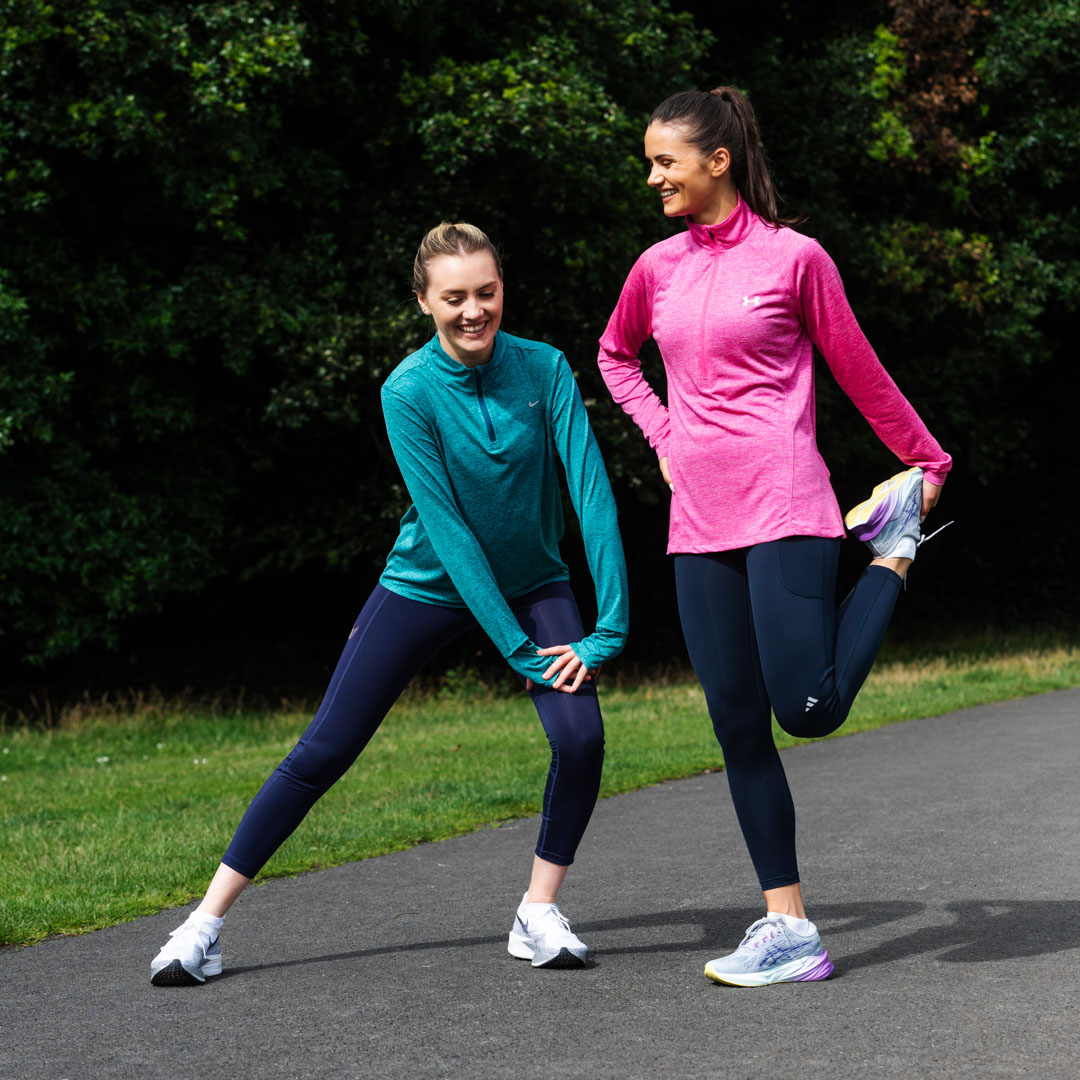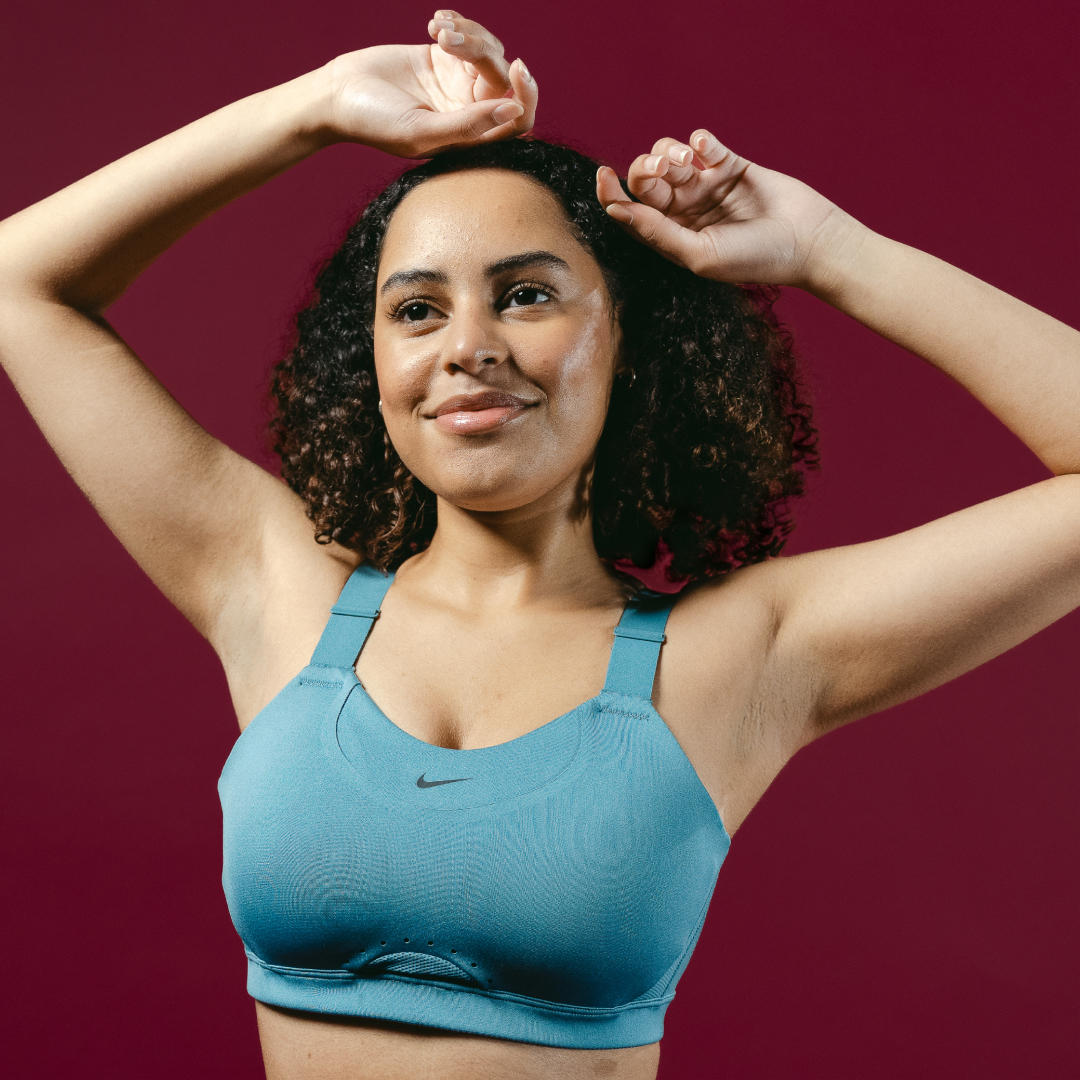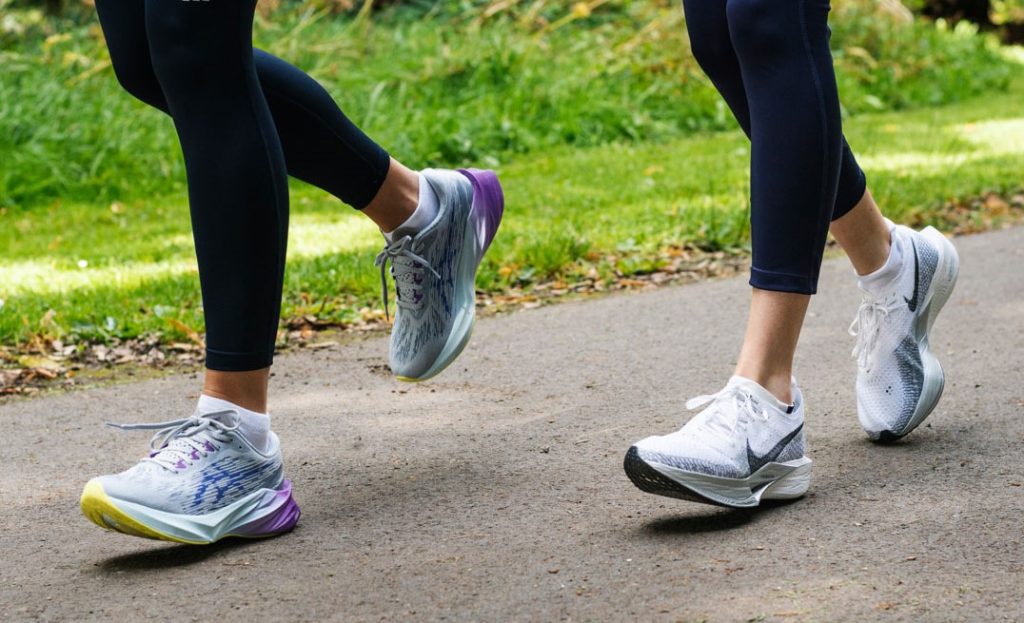The right running apparel can make a difference in your performance and comfort. In this guide, we’ll explore everything you need to know about choosing the perfect running gear to support you wherever you run or whatever your reason.
The Importance of Proper Running Apparel
It’s not just about lacing up your shoes and hitting the pavement. Beyond style and aesthetics, your running attire directly impacts your running experience. From enhancing your performance, optimising your movements or boosting your motivation, selecting the right running gear is extremely important. So, let’s explore how the right apparel can elevate your running game to new heights, ensuring you’re prepared for any weather, terrain, or distance.
Enhanced Performance: Running apparel plays a crucial role in enhancing your performance. The right gear is designed to reduce friction, minimise chafing, and optimise your body’s movements. Running in comfortable and well-fitting apparel lets you focus more on your stride and pace, improving your running efficiency.
Temperature Regulation: Running generates heat, and your body needs to disperse it efficiently to prevent overheating. Running gear is designed with moisture-wicking materials that pull sweat away from your skin, keeping you dry and comfortable. Int provides insulation to keep you warm in cold conditions and helps with cooling in hot conditions.
Motivation and Confidence: Looking and feeling good in your running gear can boost your confidence and motivation. The right apparel can make you feel like a professional athlete, and this positive mindset can translate into better performance and a more enjoyable run.
Weather Adaptability: Running apparel is designed to adapt to various weather conditions. Water-resistant or waterproof gear can keep you dry and warm in adverse weather like rain or snow. In sunny conditions, UV-protective clothing can shield you from harmful sun rays.
Functional Features: Many running garments have pockets for storing essentials, reflective elements for safety during low-light conditions, and zippers for ventilation control. These features can improve your overall running experience.
Longevity and Cost-Efficiency: High-quality running apparel is often more durable and longer-lasting, making it a cost-effective choice in the long run. It can withstand frequent use and washing, saving you money on replacements in the long run.
WHAT TO LOOK FOR IN Running Shorts and Leggings
Proper running shorts and leggings are essential for runners to enhance comfort, performance, and overall running experience. We’ll explore the benefits, different materials, and styles to provide insights into what you should look for when purchasing.
Benefits of Running Shorts:
Moisture-Wicking Materials: Running shorts are typically made of moisture-wicking materials like polyester or nylon. These fabrics help to wick sweat away from the skin, keeping you dry and preventing chafing.
Breathability: Shorts are more breathable than full-length pants, providing better airflow to help regulate body temperature during runs.
Freedom of Movement: Running shorts offer unrestricted leg movement, allowing runners to stride freely without restriction. This is crucial for maintaining proper running form and preventing discomfort.
Lightweight Design: The lightweight design of running shorts minimises the weight you have to carry, which can help improve overall running performance.
Versatility: Running shorts are suitable for various weather conditions. You can choose shorter lengths for hot weather and longer options for cooler days.

Types of Running Shorts:
Short Length (3 inches or less): Shorts shorts give the most ventilation and range of motion when running. Most competitive runners prefer these. Their construction, lightweight design, and non-restrictive cut make them perfect for sprinting and long-distance road running, such as a marathon.
Medium Length (4-6 inches): When a short length is too short, and long ones are too long, the medium style is your best alternative. They’re the best option if you like to switch up your runs from trails to track training.
Long Length (7 inches and more): A longer short is usually best for shorter running distances. They’re ideal for jogging in the winter or when running off-road, as they protect from dirt and debris. Look for sweat-wicking materials and ventilation to ensure your performance is not hampered.
Split Shorts: These have a high split on the sides, offering maximum leg movement. They are ideal for competitive runners.
Compression Shorts: These snug-fitting shorts provide muscle support and reduce muscle vibration, enhancing performance and reducing the risk of injury.

Benefits of Running Leggings:
Compression and Muscle Support: Running leggings provide compression, which can enhance blood flow, reduce muscle fatigue, and improve recovery.
Warmth: In colder weather, leggings offer insulation to keep the legs warm without adding bulk.
Reduced Chafing: Leggings reduce friction between the thighs, preventing chafing — a common issue for runners.
Moisture-Wicking: Like shorts, leggings are often made from moisture-wicking materials to keep sweat away from the skin.
Types of Running Leggings:
Full-Length Leggings: Ideal for cold weather and added leg coverage.
Capri-Length Leggings: These come just below the knee and are suitable for milder temperatures.
Compression Leggings: Designed for muscle support and recovery.
WHAT TO LOOK FOR IN the Perfect Running Top
When it comes to running tops, there are a few factors to consider that are crucial for comfort and performance. Here’s what you should look for:
Moisture-Wicking Properties: Running generates sweat, and moisture-wicking materials like polyester and technical blends are designed to pull sweat away from your skin to the fabric’s surface. This helps in rapid evaporation, keeping you dry and preventing chafing, irritation, and discomfort during your run.
Breathability: Breathable fabrics allow air to flow freely through the garment, which helps regulate your body temperature and prevent overheating. Proper ventilation is particularly important during intense or long runs when your body produces more heat.
Reduced Weight: Moisture-wicking and breathable materials are lightweight, ensuring your running shirt doesn’t become heavy and soaked with sweat during your workout. This helps you maintain agility and comfort throughout your run.
Odour Control: Many moisture-wicking fabrics are also treated with antimicrobial agents, which reduce the growth of odour-causing bacteria, keeping your running shirt smelling fresh.

Styles of Running Tops:
Running Tanks: Running tanks are sleeveless and provide maximum breathability and freedom of movement. They are excellent for hot weather and intense workouts. Look for moisture-wicking and quick-drying materials in tank tops.
Running T-Shirts: Running t-shirts are versatile and suitable for various weather conditions. Short-sleeve t-shirts are great for warm days, while long-sleeve t-shirts offer more coverage and warmth for cooler weather. Ensure they are made from moisture-wicking and breathable fabrics.
Running Jacket: Long-sleeve running jackets are ideal for running in cold or windy conditions. They provide extra insulation while still offering moisture-wicking and breathable properties. Look for thumbholes to keep your sleeves in place and provide extra hand warmth.
Quarter-Zip Tops: These shirts have a partial zipper in the front, allowing you to adjust ventilation. They are versatile for various weather conditions and provide added breathability options.
WHAT TO LOOK FOR IN A Sports Bras for Running
Running is a high-impact activity, and without proper support, you risk discomfort, pain, and potential long-term damage to your breast tissue and ligaments. Here’s why the right-fitting sports bra is essential:
Reduced Breast Movement: Running involves repetitive vertical and lateral breast movement, which can strain the ligaments and skin. A well-fitted sports bra significantly reduces this movement, minimising the risk of breast discomfort and pain.
Comfort and Confidence: The right sports bra provides comfort, ensuring you can focus on your run without being distracted by discomfort or the fear of bouncing breasts. This boost in comfort can also enhance your confidence during your workouts.
Preventing Ligament Damage: Over time, insufficient breast support during running can stretch Cooper’s ligaments, resulting in sagging breasts. A high-quality sports bra helps prevent this damage by keeping your breasts firmly in place.
Reduced Chafing and Irritation: Sports bras designed for running are often made from moisture-wicking materials to minimise chafing and irritation caused by sweat and friction.
Improved Performance: With the right sports bra, you can run more comfortably and confidently, improving your running performance and helping you reach your goals.

Why High-Support Sports Bras are Best for Running:
High-support sports bras are designed to minimise breast movement during high-impact activities like running. Here’s why they are the best choice for runners:
Maximum Support: High-support sports bras provide the highest level of support, often featuring encapsulation or compression support methods. They minimise vertical and lateral breast movement, ensuring your breasts stay securely in place during your run.
Comfort and Stability: These bras are designed with wider straps and underbands to distribute the weight evenly, reducing pressure points and increasing stability. This enhanced stability prevents the bra from shifting during your run.
Adjustable Features: Some high-support sports bras have adjustable straps and closures, allowing you to customise the fit to your specific body shape and comfort preferences.
Durability: High-quality, high-support sports bras are built to withstand the rigours of running and maintain their supportiveness over time.
WHAT TO LOOK FOR IN RUNNING ACCESSORIES
Running accessories ensure comfort, safety, and performance during your runs, from socks to hats and gloves. In this section, we’ll explore the importance of these essential running accessories:
Running Socks
Running socks may seem like a small detail, but they are vital to your overall comfort and foot health. Here’s why they are essential:
- Moisture Management: Running socks are typically made from moisture-wicking materials that keep your feet dry, reducing the risk of blisters and discomfort caused by sweat.
- Cushioning: Many running socks offer extra cushioning in the heel and toe areas, providing added comfort and shock absorption during your runs.
- Arch Support: Some running socks offer targeted arch support to improve stability and reduce fatigue during your runs.
Running Hats:
Running hats are not just a fashion statement; they serve important functional purposes during your runs:
- Sun Protection: A running hat with a brim provides shade and protects your face and eyes from harmful UV rays, reducing the risk of sunburn and eye strain.
- Sweat Management: Running hats are designed to wick sweat away from your forehead, keeping it out of your eyes and preventing discomfort.
- Temperature Regulation: In cooler weather, a running hat can help retain heat, while in warmer conditions, it can keep you cool by shielding your head from direct sunlight.
Running Gloves:
Running gloves are essential accessories, particularly in cold weather. They offer several benefits:
- Warmth: Running gloves provide insulation to keep your hands warm and prevent numbness in chilly conditions.
- Dexterity: Look for gloves designed with touchscreen-compatible fingertips, allowing you to use your smartphone or smartwatch without removing them.
- Moisture Management: Running gloves made from moisture-wicking materials help keep your hands dry and comfortable during runs.
WHAT TO LOOK FOR IN REFLECTIVE RUNNING GEAR
Safety should always be a top priority for runners, especially in low-light conditions such as early mornings or evenings. Visibility is a key concern during these times, and being seen by motorists, cyclists, and other pedestrians is crucial to prevent accidents.

Recommended Reflective Running Gear:
Reflective Running Apparel: Look for running gear with built-in reflective elements, such as reflective strips, logos, or patterns. These reflective features catch and reflect light, making you more visible to others. Consider options like reflective running jackets, vests, and leggings.
LED Safety Lights: Attachable LED lights can be a great addition to your running gear. They provide additional visibility and can be clipped onto your clothing or worn as armbands. Some running shoes also come with built-in LED lights for added safety.
Weather-Resistant Running Jackets: Weather-resistant jackets protect you from rain, wind, and cold temperatures while remaining breathable. Look for options with reflective detailing for enhanced visibility in low-light conditions.
Reflective Accessories: Consider adding reflective accessories like reflective wristbands, belts, or hats to your running ensemble. These small but effective items can significantly increase your visibility to others.
Reflective Gloves and Headwear: Keep your hands and head visible with reflective gloves and headwear. These accessories are essential for running during cold weather and provide extra safety.
Lightweight Reflective Backpacks: If you carry essentials during your runs, choose a lightweight backpack with reflective elements. It’ll add visibility and ensure your gear stays secure and dry.
Reflective Running Shoes: Some running shoe models have reflective accents on the upper and outsole. These can improve visibility, especially if you run in areas with minimal lighting.
Investing in the right running apparel is a smart move for your performance and overall running experience. Choosing the perfect shoes, clothing, and accessories can boost your motivation, reduce the risk of injuries, and enjoy every step of your journey.



